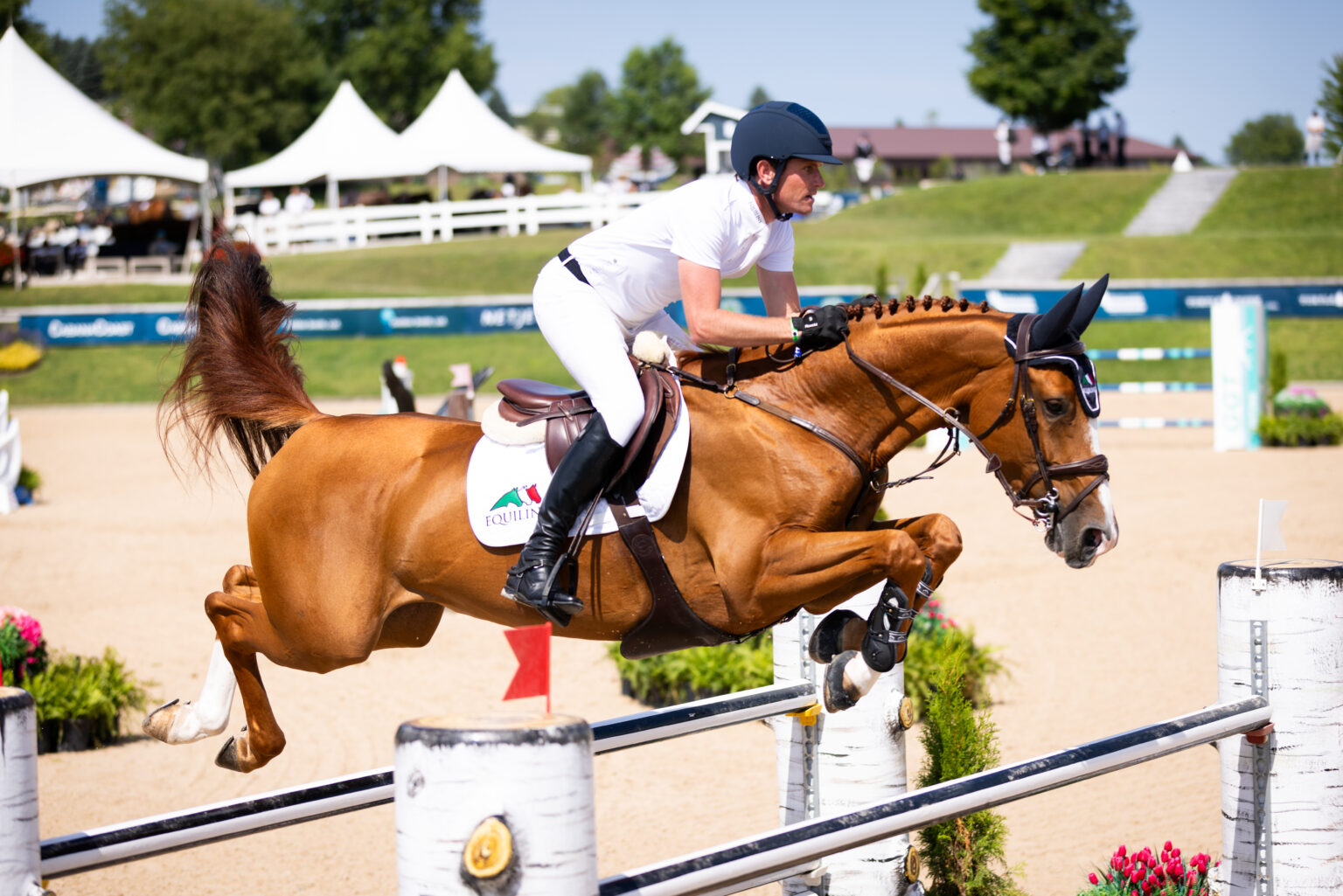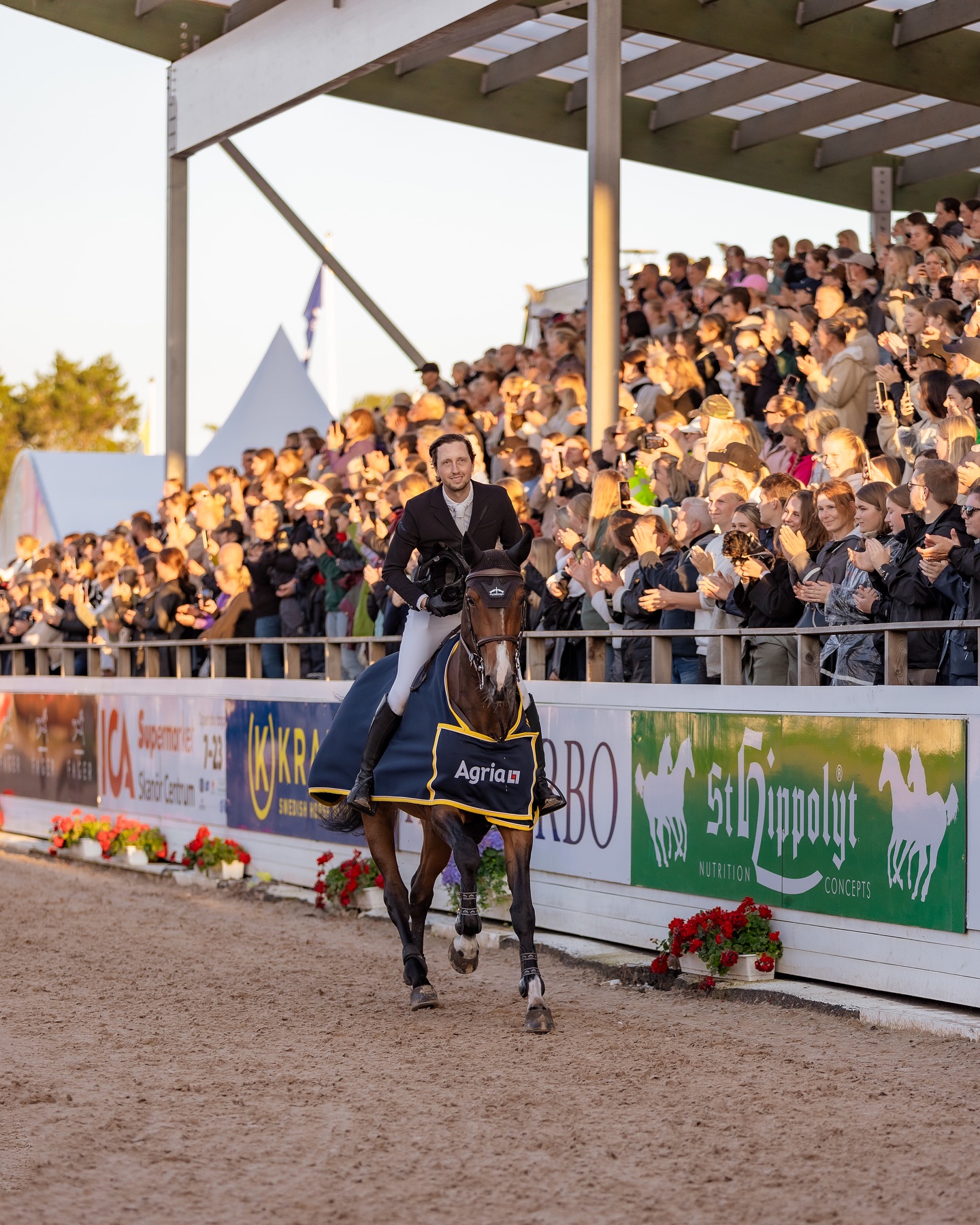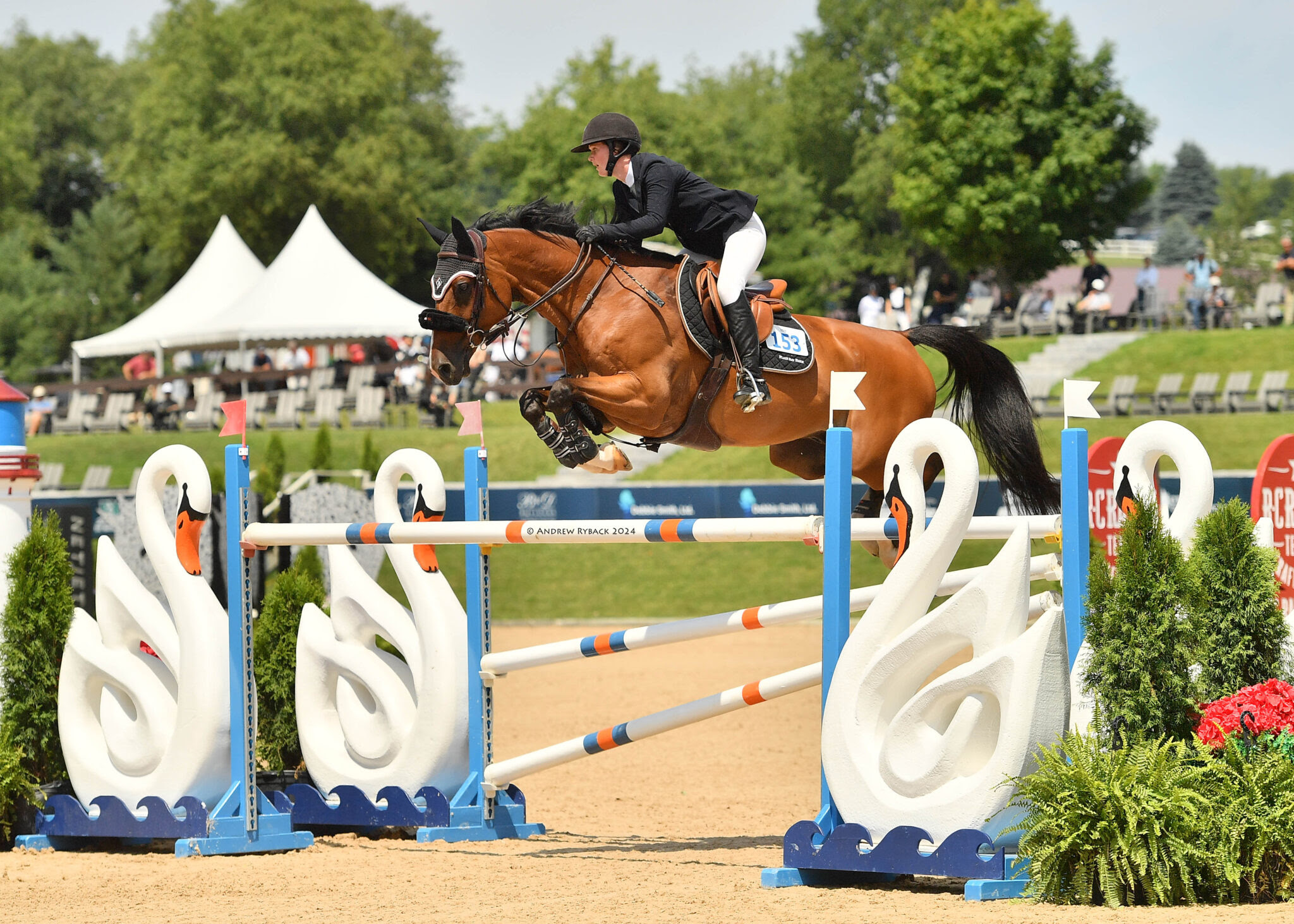Later Friday afternoon, the day was Darragh Kenny’s after he scored a second Grand Prix victory in less than one week. The win Friday came aboard Serendepety, owned by Oakland Ventures and Beerbaum Stables, in the $30,000 Traverse City National Grand Prix.
“I bought her when she was 5,” Kenny (IRL) said of the 8-year-old Hanoverian mare (Stolzenburg x Escudo). “I bought her with friends of mine and we owned her together until she was 7, when Ludger Beerbaum bought half. She’s a horse I’ve produced since she was very young and I think she’s incredibly special. She’s one of the most fun horses to ride and I’m enjoying producing her.”
Kenny was one of seven pairs to jump clear in round one of competition, going up against several other top professionals in the short course. Second to last in the order, Kenny clocked in the fastest time by nearly two seconds, putting pressure on Canada’s Erynn Ballard, who was last to go with Nanini Van D’Abelendreef. With two rails down for Ballard, the win was Kenny’s, aboard his extremely promising mare.
Alison Robitaille (USA) ended up just behind the pace, placing second with Ester De Maugre, owned by Alison Firestone LLC, while Charlise Casas (USA) took third place with Chaccolina D, owned by Always Faithful Equine, LLC.
Despite Serendepety being a young horse, Kenny knew he could lean on the mare’s natural speed and carefulness to guide him to the win. “She’s done it in every age group the whole way up into this,” he said of her progression up the levels. “We were talking about it before I went in for the jump-off; we were at a show last year in Valkenswaard and she won all three 7-year-old classes. Speed is not a problem for her.”
Kenny has his strategy for bringing up young horses down to a science, and, although it’s still personalized for each individual horse, his track record is showing that the process works.
“I produce them very slowly and I find that works well normally,” he explained. “Then when they’re 9, they’re ready to do whatever you want them to do. I keep it a really slow process, don’t show them too much, give them lots of breaks, and they become what they’re going to be in the end.”



